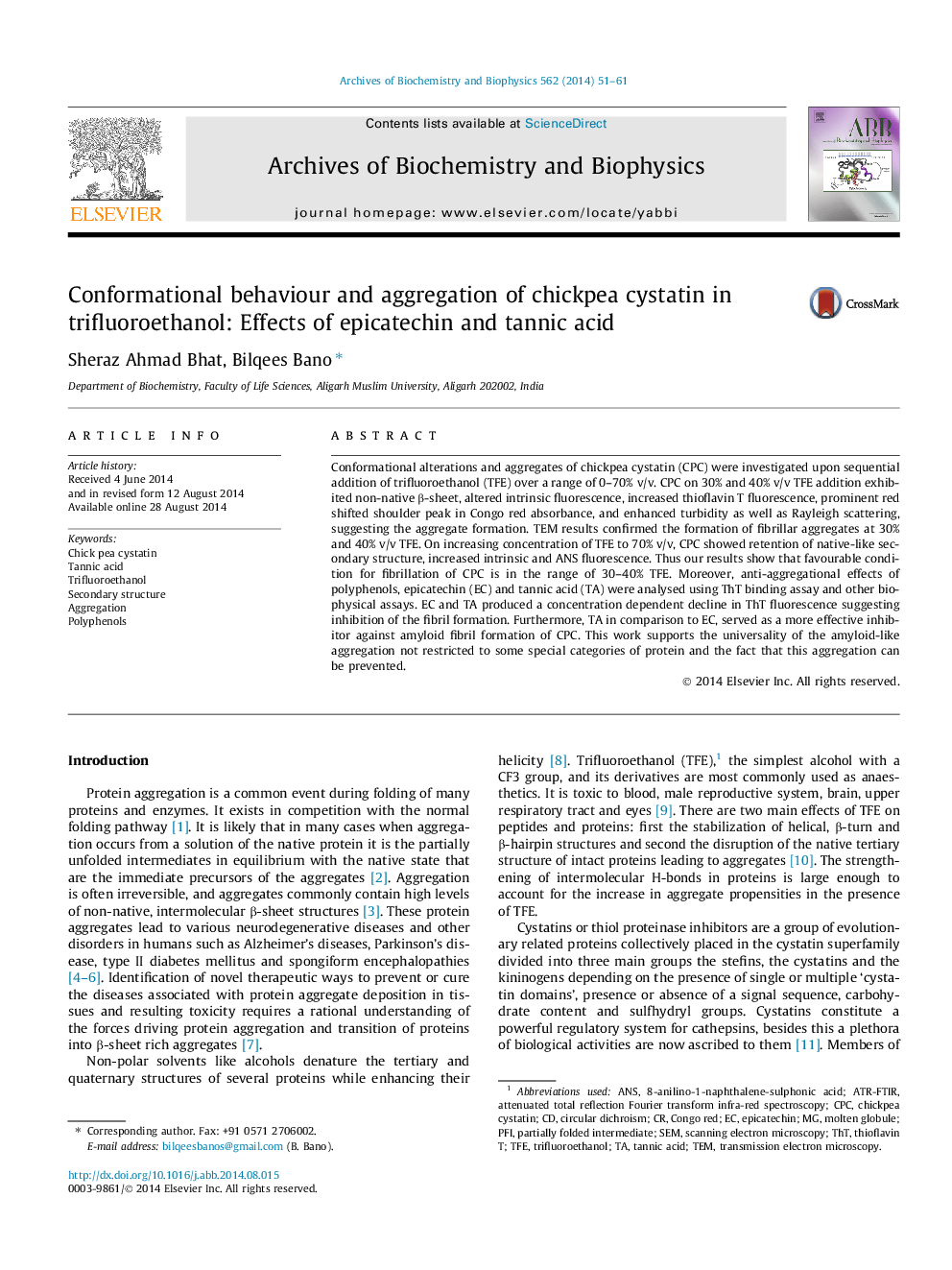| Article ID | Journal | Published Year | Pages | File Type |
|---|---|---|---|---|
| 1925023 | Archives of Biochemistry and Biophysics | 2014 | 11 Pages |
•Conformational changes of CPC in the TFE concentration range of 0–70% were studied.•Chickpea cystatin (CPC) formed aggregates at TFE concentration of 30–40% (v/v).•Tannic acid showed superior anti-aggregational effect over epicatechin.
Conformational alterations and aggregates of chickpea cystatin (CPC) were investigated upon sequential addition of trifluoroethanol (TFE) over a range of 0–70% v/v. CPC on 30% and 40% v/v TFE addition exhibited non-native β-sheet, altered intrinsic fluorescence, increased thioflavin T fluorescence, prominent red shifted shoulder peak in Congo red absorbance, and enhanced turbidity as well as Rayleigh scattering, suggesting the aggregate formation. TEM results confirmed the formation of fibrillar aggregates at 30% and 40% v/v TFE. On increasing concentration of TFE to 70% v/v, CPC showed retention of native-like secondary structure, increased intrinsic and ANS fluorescence. Thus our results show that favourable condition for fibrillation of CPC is in the range of 30–40% TFE. Moreover, anti-aggregational effects of polyphenols, epicatechin (EC) and tannic acid (TA) were analysed using ThT binding assay and other biophysical assays. EC and TA produced a concentration dependent decline in ThT fluorescence suggesting inhibition of the fibril formation. Furthermore, TA in comparison to EC, served as a more effective inhibitor against amyloid fibril formation of CPC. This work supports the universality of the amyloid-like aggregation not restricted to some special categories of protein and the fact that this aggregation can be prevented.
